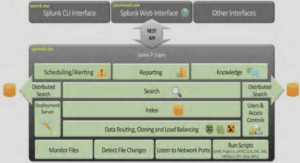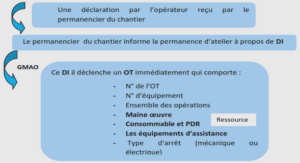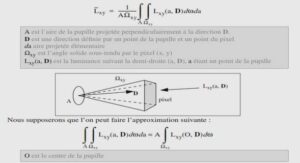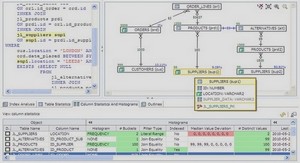Contrôlabilité simultanée de deux et
trois équations
Structure of the article
This article is organized as follows. We recall, in Section 3.2, well posedness results. To emphasize the ideas developed in this article, we start by proving Theorem 3.5. Section 3.3 is devoted to the construction of the reference trajectory. In Subsection 3.4.1, we prove the controllability of the linearized system around the reference trajectory. In Subsection 3.4.2, we conclude the return method thanks to an inverse mapping argument. In Section 3.5, we adapt the construction of the reference trajectory for two equations leading to Theorems 3.2 and 3.3. Finally, Section 3.6 is devoted to non controllability results and the proofs of Theorems 3.1 and 3.4. 3.1.4 A review of previous results Let us recall some previous results about the controllability of Schrödinger equations. In [5], Ball, Marsden and Slemrod proved a negative result for infinite dimensional bilinear control systems. The adaptation of this result to Schrödinger equations, by Turinici [134], proves that the reachable set with L 2 controls has an empty interior in S ∩ H2 (0)((0, 1), C). Although this is a negative result it does not prevent controllability in more regular spaces. Actually, in [10], Beauchard proved local exact controllability in H7 using Nash-Moser theorem for a one dimensional model. The proof of this result was simplified, by Beauchard and Laurent in [16], by exhibiting a regularizing effect allowing to apply the classical inverse mapping theorem. In [15], Beauchard and Coron also proved exact controllability between eigenstates for a particle in a moving potential well. Using stabilization techniques and Lyapunov functions, Nersesyan proved in [112] that Beauchard and Laurent’s result holds globally in H3+ε . Other stabilization results on similar models were obtained in [17, 103, 111, 19, 108] by Mirrahimi, Beauchard, Nersesyan and the author. Unlike exact controllability, approximate controllability results have been obtained for Schrödinger equations on multidimensional domains. In [45], Chambrion, Mason, Sigalotti and Boscain proved approximate controllability in L 2 , thanks to geometric technics on the Galerkin approximation both for the wave function and density matrices. These results were extended to stronger norms in [30] by Boussaid, Caponigro and Chambrion. Approximate controllability in more regular spaces (containing H3 ) were obtained by Nersesyan and Nersisyan [114] using exact controllability in infinite time. Approximate controllability has also been obtained by Ervedoza and Puel in [70] on a model of trapped ions. 94 Chapitre 3. Contrôlabilité simultanée de deux et trois équations Simultaneous exact controllability of quantum particles has been obtained on a finite dimensional model in [136] by Turinici and Rabitz. Their model uses specific orientation of the molecules and their proof relies on iterated Lie brackets. In addition to the results of [45], simultaneous approximate controllability was also studied in [46] by Chambrion and Sigalotti. They used controllability of the Galerkin approximations for a model of different particles with the same control operator and a model of identical particles with different control operators. These simultaneous approximate controllability results are valid regardless of the number of particles considered. Finally, let us give some details about the return method. This idea of designing a reference trajectory such that the linearized system is controllable was developed by Coron in [49] for a stabilization problem. It was then successfully used to prove exact controllability for various systems : Euler equations in [50, 74, 76] by Coron and Glass, Navier-Stokes equations in [51, 73, 48, 58] by Coron, Fursikov, Imanuvilov, Chapouly and Guerrero, Bürgers equations in [85, 78, 47] by Horsin, Glass, Guerrero and Chapouly and many other models such as [52, 75, 77, 59]. This method was also used for a bilinear Schrödinger equation in [10] by Beauchard. The question of simultaneous exact controllability for linear PDE is already present in the book [98] by Lions. He considered the case of two wave equations with different boundary controls. This was later extended to other systems by Avdonin, Tucsnak, Moran and Kapitonov in [4, 3, 88]. To conclude, the question of impossibility of certain motions in small time, at stake in this article, for bilinear Schrödinger equations was studied in [53, 18] by Coron, Beauchard and the author.
Controllability results for two equations
Theorem 3.5 leads to local exact controllability up to a global phase and a global delay in the case N = 2. Actually the strategy we developed can be improved in this case to obtain less restrictive results, namely Theorems 3.2 and 3.3. Here, we only detail the construction of the reference trajectory, the application of the return method being very similar to Section 3.4. Subsection 3.5.1 will imply Theorem 3.2 and Subsection 3.5.2 will imply Theorem 3.3. In all this section, we consider N = 2. Let T1 > 0 and ε ∈ (0, T1). As in Theorem 3.6, the reference control is designed in two steps. Let u ≡ 0 on [0, ε 2 ). Proposition 3.2 is replaced by the following proposition.
Conclusion, open problems and perspectives
In this article, we have proved that the local exact controllability result of Beauchard and Laurent for a single bilinear Schrödinger equation cannot be adapted to a system of such equations with a single control. Thus, we developed a strategy based on Coron’s return method to obtain controllability in arbitrary time up to a global phase or exactly up to a global delay for two equations. For three equations local controllability up to a global phase does not even hold in small time with small controls. Thus, in this setting and under generic assumptions no local controllability result can be proved in small time if N ≥ 3. Finally, the main result of this article is the construction of a reference trajectory and application 118 Chapitre 3. Contrôlabilité simultanée de deux et trois équations of the return method to prove local exact controllability up to a global phase and a global delay around (Φ1, Φ2, Φ3). However our non controllability strategy is only valid for small time and we do not know if local exact controllability around the eigenstates (Φ1, Φ2) hold in time large enough (for two equations or more). This would be the case if one manages to prove that the global delay T ∗ can be designed to be the common period of the eigenstates Φk i.e. T ∗ = 2 π . This is an open problem. Moreover, when Hypothesis 3.2 or 3.3 are not satisfied, we do not know if the considered quadratic forms still have a sign. Thus, the question of non controllability when these hypotheses do not hold is an open problem. The question of non controllability with large controls has not been addressed here since our strategy relies on a second order approximation valid for small controls. The question of controllability of four equations or more is also open. In fact, each time we add an equation there is another diagonal coefficient hΨj , Φji which is lost. We proved that we can recover this lost direction using either a global phase or a global delay for N = 2 and both a global phase and a global delay in the case N = 3. It seems that there is no other degree of freedom to use to obtain controllability for N ≥ 4. Moreover, there are other directions than the diagonal ones with the same gap frequencies (e.g. λ7 − λ1 = λ8 − λ4). Thus, for N ≥ 4 one should consider a model with a potential that prevents such resonances.





